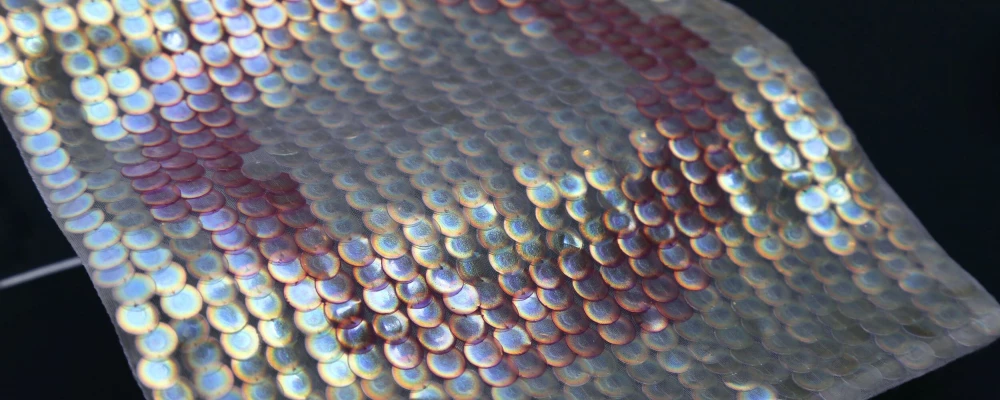
Fashion Futures: Next Generation Pioneers Of Sustainable Practice
In this article, I look to the younger generations who are diving deep into materials and thinking systemically about issues in the fashion and product industries. While those age 30-and-up are having to change habits, get back to learning and reconsider values, the younger generation, in university, college and school are being challenged by their teachers, environment, and the media to address their practice in light of present issues right from the very beginning. We are now seeing holistic design thinking in practice, rather than as some new-wave learning style, and these changemakers are speeding along.
I'm approaching 33 myself and I appreciate that I have got to my state of knowledge organically, with a creative practice that spans interests drawn from many sectors. Unlike where I was at as a teenager, with ambition, yes, and an ability to see what fit where, I feel that today's millennials and the generations following are having to battle it out even more in order to get noticed. Perhaps this is where they'll have a clear advantage over us.
As new technology and industries are formed, there is also mass collaboration, collective action, and mindfulness that are progressing alongside the heavy building (metaphorical and physical), making it feel as if the younger ones may actually have control over a situation we lost sight of. Don't get me wrong. Grown-ups are reverting the harmful actions of the recent past too, with many, many surges in new sustainable practice coming from adult conversation. But it feels like these kids are actually taking off with what I myself was trying to do at that age. Where I was scrappy and pulling together all of these influences to get to where I am now, they're already all over their identity and values. I guess they just truly grasp the emergency we're in and get the emotional pull that comes from creating stuff, that they want to make a positive impact while doing it.
Read on for some of my favourite designers and makers pushing the boundaries of sustainability through biomimicry, simple acts, and reworking.
Redress Design Award 2020
Hong Kong-based environmental charity Redress has named Vietnamese menswear designer Le Ngoc Ha Thu and Argentinian womenswear designer Juliana Garcia Bello as winners of the Redress Design Awards 2020. Redress is working to reduce fashion's waste, through education of the circular economy, and used the awards as a way to engage and nurture emerging fashion designers who can become catalysts for change within the industry.
Ngoc Ha Thu Le - "For her Redress Design Award collection, Slow Boy Archive, Ngoc Ha Thu takes inspiration from Japanese-style Americana, creating more sustainable versions of classic menswear items. Applying zero-waste pattern design to up-cycled textiles and reconstructed clothing, Ngoc Ha Thu presents a collection that encourages consumers to take a mindful, slow-living approach to life - for their own well-being and the environment."
I particularly like the combination of textures, embroidery, and clear street identity.
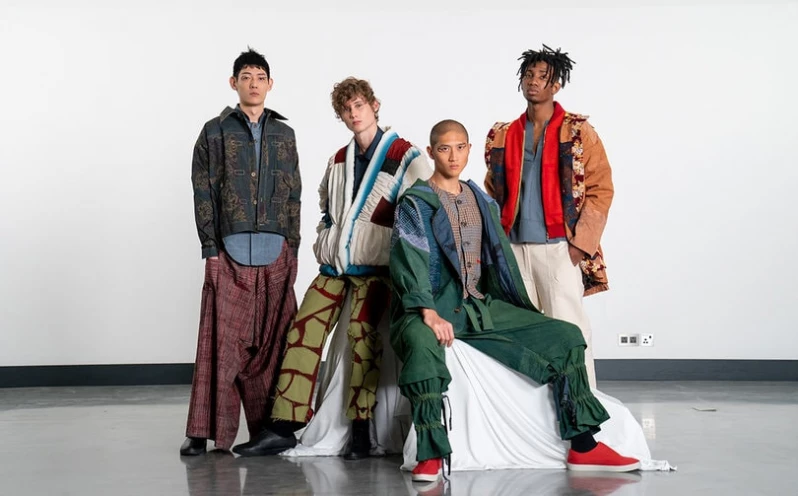
Juliana Garcia Bello - "For her Redress Design Award collection, HERENCIA, Juliana works with concepts of heritage, being, and existence and believes that every object makes a story possible. From the valued to the everyday, using garments donated by neighbours and friends, Juliana creates a collection of timeless, wearable, and easily adaptable pieces with minimalist characteristics."
I particularly like the colour palette, visible labeling, and layering. Though, with the public vote, I did go for runner up Ruth Weerasinghe for the vibrant apocalyptic-techy collection that was just me as a young designer.
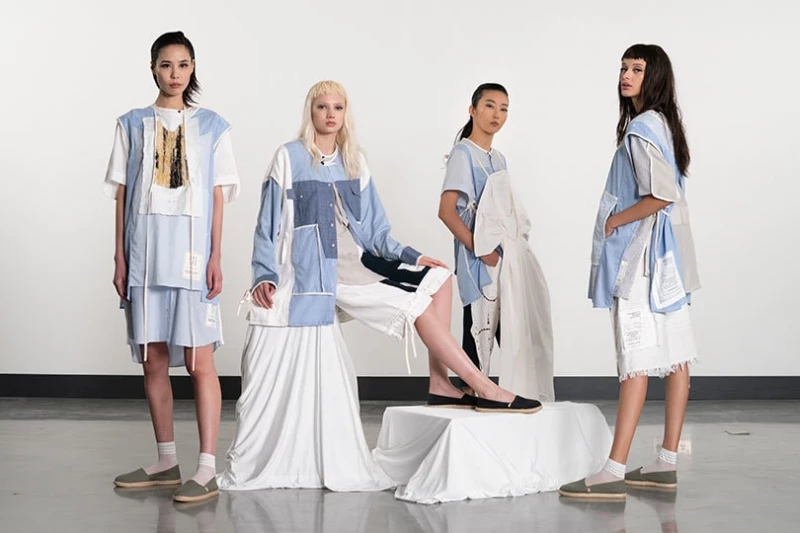
MA Fashion Futures
This was my degree, but back then it was called Fashion and the Environment and was the year unfortunately after Dilys Williams had stepped down in order to take the helm of Centre for Sustainable Fashion. Anyway, it was always a holistic design-thinking degree, with modules that weren't necessarily fashion-focussed. So it's always very interesting to see what the students come up with and how the concepts are presented. Here are just my favourites:
Nayanika Bharadwaj - a multi-disciplinary designer who explored the role of craft and its links with the concepts of activism and innovation within the larger spectrum of fashion and design sustainability. The illustrated zine contains interviews, map, manifesto, and 2D/3D speculative experiments including an activist artefact and a mobile AR app.
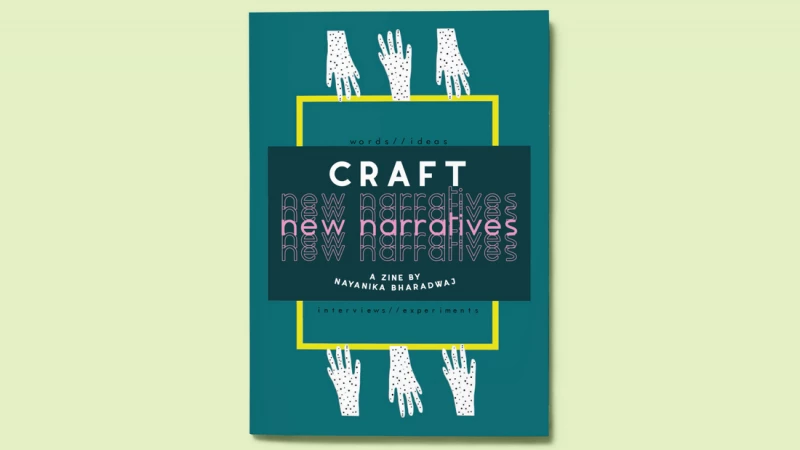
Danica Dsouza - the pieces are, Danica notes as 'artefacts' with material stories that reflect on ecological themes of waste, biological extinction and the relationship between Nature and Humans in an age of advancing technology. They're a little macabre and yet luxurious, with the embroidered bones acting as traditional beading.
MA Material Futures
Covering all aspects of materials - not just those involved in the malleable fashion world - this MA highlights our emotional pull to materials, their affect on our everyday lives, and innovative solutions to change up 'okay design' into positive design.
Elissa Brunato developed iridescent sequins made from cellulose with the help of scientists at the RISE Research Institutes Sweden. It approaches this ubiquitous embellishment from the base feedstock so that it can be recreated in a symbiotic way, rather than as something to micro-pollute.
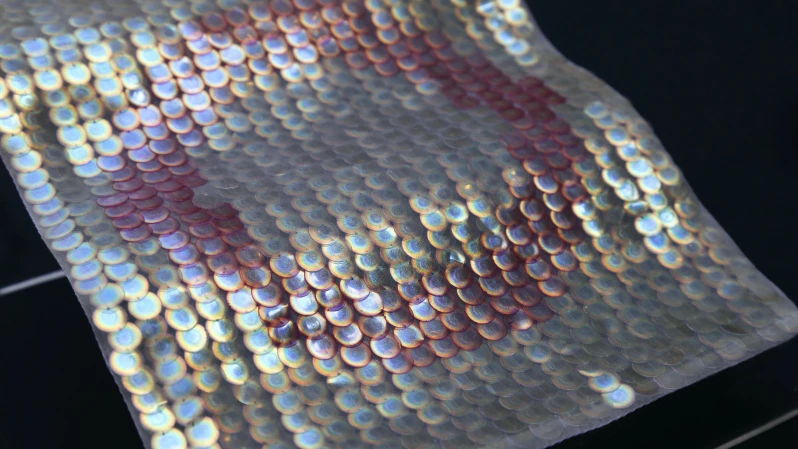
You may also like to hear about Rachel Clowes' research and development on sustainable sequins in our lesson with her on her business The Sustainable Sequin Company.
Jenny Banks wondered if you could create new fashion from recycled fibres through a process of 3D printing.

Rosie Broadhead considered encapsulating probiotic bacteria into the fibres of clothing in order that our clothing can have a beneficial impact on our health - rather than the adverse. In collaboration with microbiologist Dr. Callewaert, the garment looks high-tech and yet comforting too.
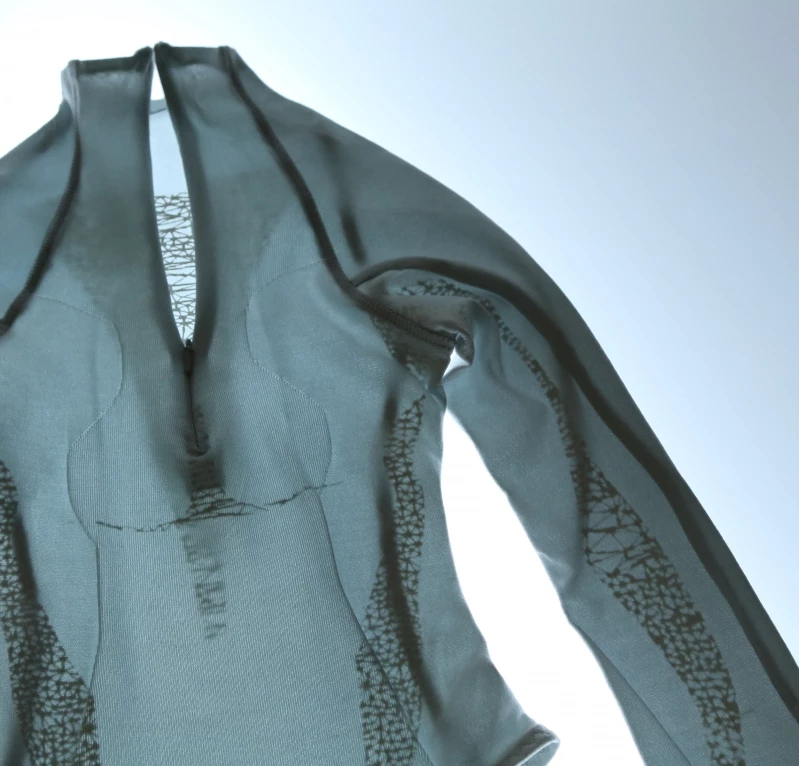
Nathalie Spencer created a vegan alternative to wool by using waste pineapple leaves. We see pineapple most popularly in use through Ananas Anam's Piñatex textiles, yet Nathalie's cloth is soft and wool-like. It looked at the pollution effects from sheep farming, and how existing waste materials could be utilised instead. The only issue with this fabric is whether the waste leaves would be processed, spun, and woven in the same country and therefore affecting the pollution levels. In our current wool system, especially in the UK, we don't have the infrastructure to process wool fleeces and so they go to waste - thereby expanding the associated pollution because there's no circular solution.
From this same MA, you can find Katie May Boyd's work on recycling expanded polystyrene to create a political statement. Listen and watch Katie explain her project in our Technical Tutorial.
Jen Keane was another to look to micro-organisms for biomimicry inspiration in her 'Grown' textile. Jen weaves the warp, while the bacteria grow the weft. The question is whether we are collaborating with nature, or just trying to control it.
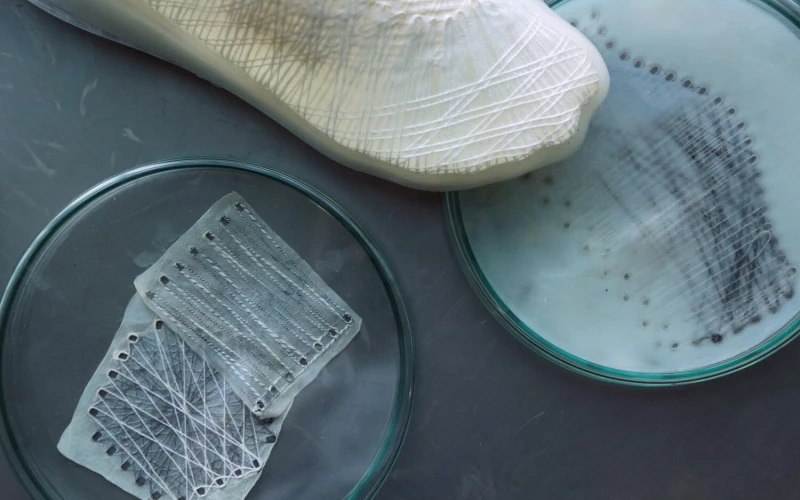
Kolding Design School (Denmark)
The Look Don't Touch! exhibition at the Museum at Koldinghus showcases more than 100 projects from Kolding's design graduates. This school is interdisciplinary, with playfulness and sustainability at its heart across all subjects. They engender the teaching of positive practical solutions so that students feel actually able to accomplish anything. Having spent two weeks there at "Design Camp", I feel strongly towards this school and its approach.
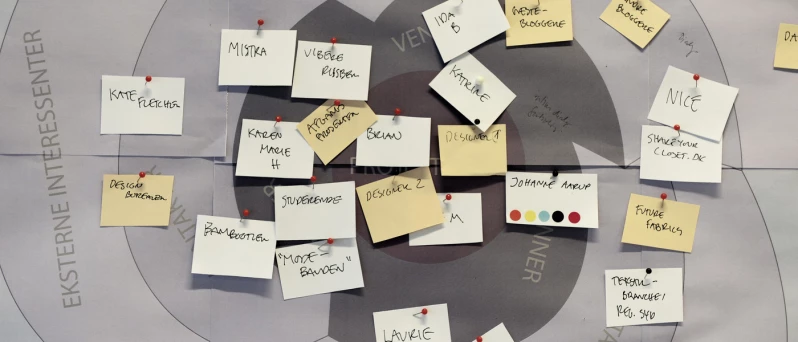
The exhibition catalogue should inspire you to click wherever, and you will learn.
Some favourites for their simplicity:
040 Christine Beate K. Husøy - instructional material for year 7's for sustainable clothes
038 Ida Fabricius Hamberg - underwear repair that challenges the norm
0111 Ashna Patel - regenerative cotton collective, locally produced
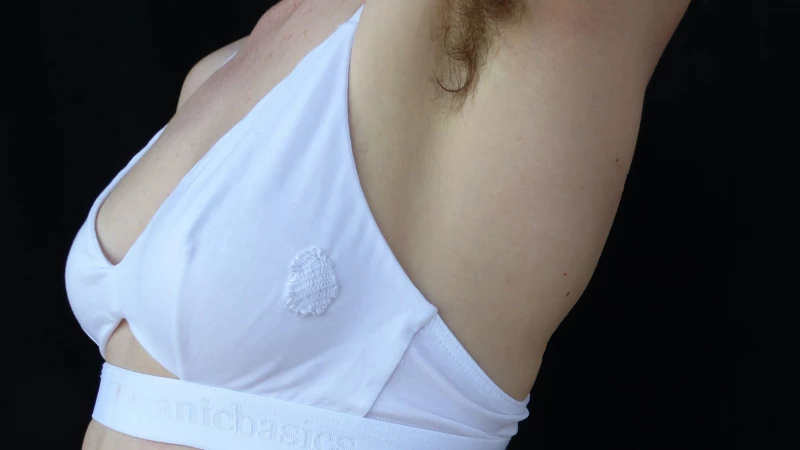
Fashion Futures: Next generation pioneers of sustainable practice from The Sustainable Fashion Collective

London Fashion Week
We also recommend that you check in with London Fashion Week SS21 (September 2020) that sees a selection of 'positive' designers and panel discussions highlighted in its own section.
